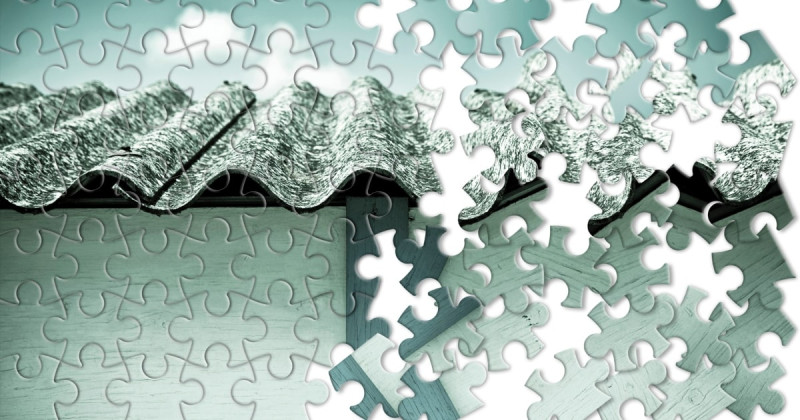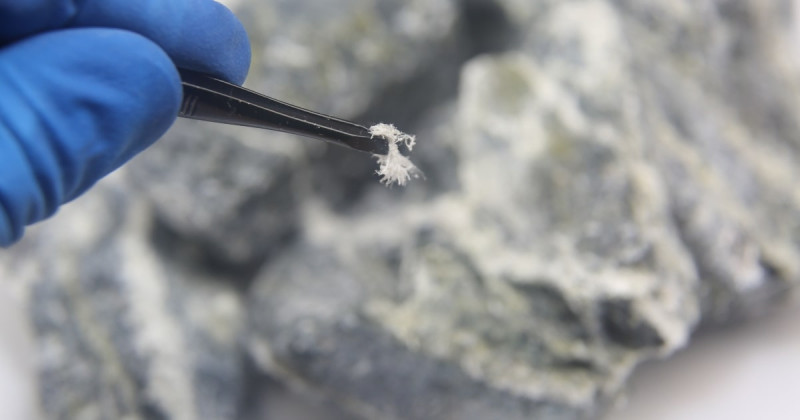Asbestos is a building material that was used during the 1930’s through to mid 1980’s due to its strength, cost and the fact that it’s incombustible, heat-resistant and fire-proof. Over time it became apparent that those who were exposed to asbestos ended up with various health complications. This lead to a complete ban of asbestos use in Australia, a law that was passed in late December 2003.
In this blog we will explore the difference between friable asbestos and non friable asbestos, provide examples of both and how to conduct asbestos testing.
What is friable asbestos?
Friable asbestos is where asbestos is in the form of small dust like fibres and most of the time isn’t visible to the eye. Friable asbestos is the type of asbestos you need to be cautious of, as the small fibres can easily be inhaled or ingested.
If done so, these fibres may become trapped and pass deep into the lungs or digestive system, where they can cause health problems such as asbestosis, lung cancer or mesothelioma. These diseases have been found in people who were exposed to large amounts of friable asbestos for a long period of time. In fact, symptoms don’t usually appear until 20 to 30 years after the initial exposure.
Although asbestos may look non friable, it can be friable and therefore disturbed very easily, even by hand! Friable asbestos is prone to damage and can be easily broken which is why hiring a professional to remove and dispose the asbestos is highly recommended.
What are some examples of friable asbestos containing materials?
The fibrous asbestos materials that were spray applied for fireproofing, sound-proofing, insulation or decorative purpose are generally friable. Friable asbestos may be present in the following materials:
- Roofing felts
- Tremolite containing sand
- Loose or batt insulation
- Insulation boards on walls
- Pipe coverings
- Clay-based plumbing putty
- Flexible connections for ventilation ducts
- Paper “felt” underlayment for flooring
- Mastic adhesives for vinyl floors, carpets and ceiling tiles
This is only a concise list and there are many more friable asbestos containing materials. If unsure, contact us at Rapid Asbestos and we can check for hazardous material. We can often tell just by eye but if it’s not clear we will take a sample to test.
What is non friable asbestos?
Non friable asbestos is bonded using a harder material such as cement. Non friable asbestos materials are solid, rigid and cannot be easily crumbled, pulverised or reduced to powder.
If non friable asbestos is disturbed or damaged in anyway then you run the risk of exposing the fibres. This generally happens overtime, for example if the material is crushed, damaged by fire or exposed to harsh chemicals.
What are examples of non friable asbestos?
- Asbestos cement sheet – often used for fencing
- Asbestos cement moulded products
- Bitumen-based water proofing
- Vinyl floor tiles
If you are renovating a residential or commercial property that was built before the 1990’s, and are undertaking major work, such as removing flooring, walls, roofs, you should seek professional advice to test the material before you get started.
What to do if you come in contact with asbestos?
No matter the type of asbestos, whether non-friable or friable, if you have come in contact with either of these materials you should seek medical advice from a healthcare professional.
Friable and non friable asbestos testing
If you find asbestos, whether friable or non friable, it is important you seek assistance from a licensed asbestos removalist to inspect, test the material, and ensure correct removal and disposal.
With free asbestos sample testing at Rapid Asbestos Removals, there really is no excuse to risk exposing you or your loved ones to the many health issues it can cause.
If you would like to know more about our free sample testing or how we remove and dispose of non friable asbestos, please contact our friendly team who will be more than happy to assist.
Frequently asked questions
Asbestos testing is conducted by a licensed asbestos removalist, who will inspect the material and take a sample for testing. At Rapid Asbestos Removals, we offer free asbestos sample testing to ensure the correct removal and disposal of the material.
Friable asbestos is when asbestos is in the form of small, dust-like fibres that can easily be inhaled or ingested. These asbestos fibres can cause serious health problems such as asbestosis, lung cancer or mesothelioma if exposed in large amounts over a long period of time.
Non friable asbestos products are bonded with a harder material such as cement. Non friable materials are solid, and rigid and cannot be easily crumbled, pulverised or reduced to powder. Although it is not as dangerous as friable asbestos, it can still pose a health risk if damaged or disturbed.
Friable asbestos materials are commonly found in: roofing felts, tremolite-containing sand, loose or batt insulation, insulation boards on walls, pipe coverings, clay-based plumbing putty, flexible connections for ventilation ducts, paper “felt” underlayment for flooring, and mastic adhesives for vinyl floors, carpets and ceiling tiles.
If you are renovating a residential or commercial property that was built before the 1990s, it’s recommended that you seek professional advice to test for asbestos before you commence any major work that may disturb the materials.
Non-friable asbestos can become friable if it is disturbed or damaged in any way, such as through crushing, fire, or exposure to harsh chemicals. This can expose the fibres and increase the risk of human health problems.


